There’s no getting around it: glamping is more popular than ever.
A couple of years ago, the US market for glamping was projected to reach $4.8 billion in revenue by 2025.
Furthermore, a 2019 study from the KOA found that 67 percent of campers are booking glamping sites for the sake of creating a unique experience. These are guests who want to camp but want to keep a few of the comforts of home while they do it.
So, exactly what accommodations are parks using to attract glampers?
Here’s a list of 16 potential glamping options for campground owners looking to create a unique experience for their guests.
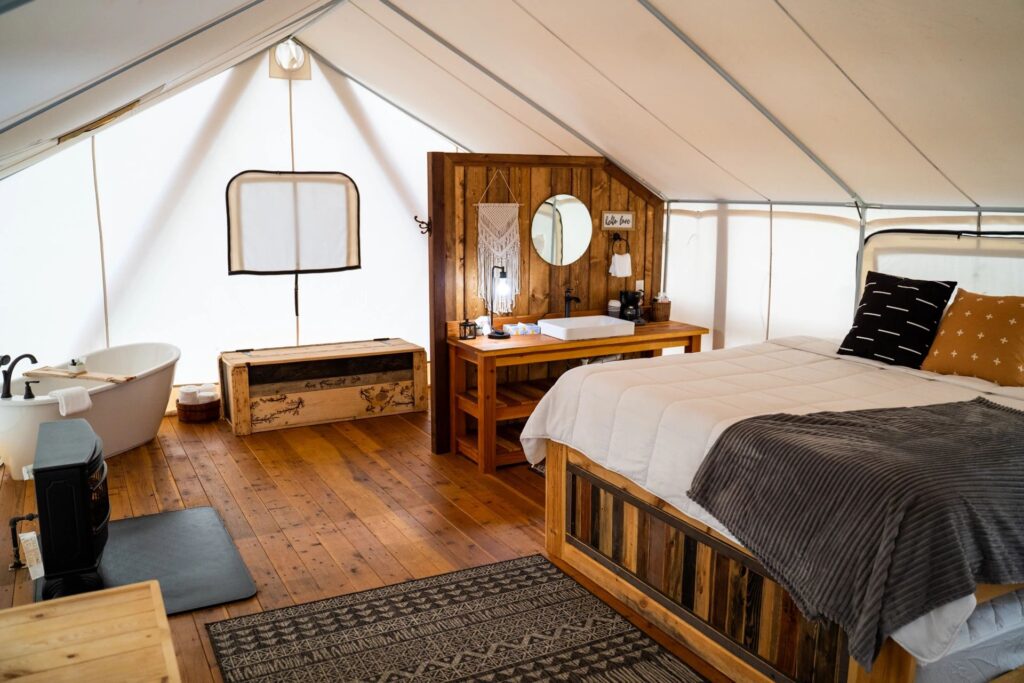
Glamping options.
1. Canvas tents
Canvas tents are some of the more malleable options a campground can offer, considering almost everything is optional (electricity, furniture, A/C, etc.). Plus, they’re incredibly durable, lasting 20 to 30 years, and can scale up or down to match the level of elegance you’re going for.
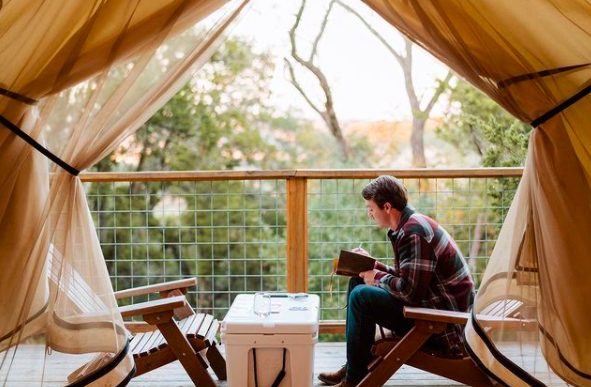
If you’re looking for an economical way to add value to your campground’s accommodations, they can start as low as $350 and range up to $1,000 or so.
2. Vintage campers
Vintage campers are a huge draw for guests seeking both novelty and nostalgia. Also, they’re profitable: flipping a used camper could earn you $6,000 on average.

That said, you’ll have the overhead of renovating a vintage camper.
Renovating an old Airstream will run you between $10,000 to $70,000, and restoring a vintage RV of any kind will cost between $1,000 and $10,000.
If you do decide to go the route of converting an older RV, be sure to consider the following:
- Electrical systems (i.e., interior and exterior lights, signals, tail lights, etc.)
- Plumbing systems (i.e., drains and traps, kitchen sink, toilet, shower, water)
- Exterior (i.e., locks, doors, hardware and seals, windows, vents, dents)
- Interior (i.e., cabinets, latches, counters, upholstery, floors)
- Kitchen appliances (i.e., water heater, furnace, oven, refrigerator)
- LP System (i.e., gas lines, regulators, hoses, pressure adjustment)
Here’s how one couple converted an ’87 Airstream motorhome into a luxury experience for guests.
3. Yurts
More and more campers seek out yurt accommodations to break away from the cookie-cutter hotel room experience.
While yurts aren’t exactly cheap (somewhere between $11,500 and $44,000), they are still profitable. According to Pacific Yurts Inc., you can make $1,500 a month from just yurt reservations alone. So your investment should pay for itself in a couple of years.
4. Cabins
Cabins and cottages can rent for $1,000 to $2,000 a week and attract a broad audience.
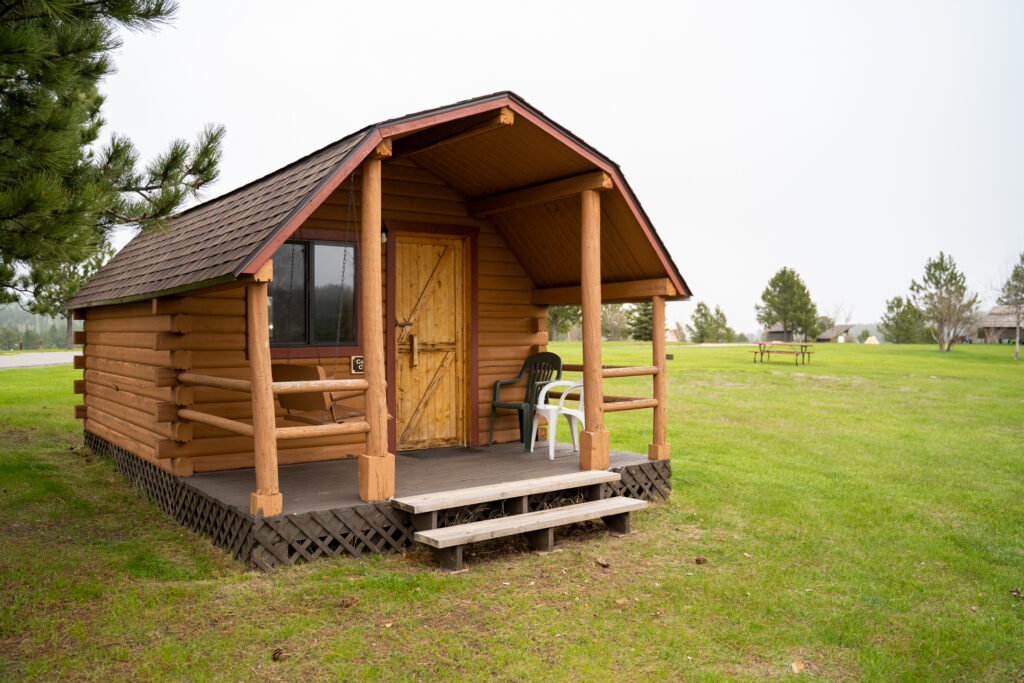
The demand for cabins and tents is expected to grow 2.5 times over the next five years. It’s certainly worth investing in at least a few units for your park. However, building a cabin would require a permit because it is a permanent structure.
5. A-frames
An architectural design with a quaint interior, A-frames are a modern and imaginative approach to traditional cabins.
But even beyond aesthetics, A-frames are affordable, simple to design, and better at snow management due to their steep-roofed design. They also allow for more natural light, making for an enjoyable stay.
6. Park model RVs
Park models are similar to traditional RVs in that they are mobile and need to be hooked up to sewer, water, and electricity. However, they are distinctly larger and more “homey” in design. Park models come in various design aesthetics, making it easy to find a park model to fit your park brand.
You can expect to pay between $20,000 and $200,000 per unit.
7. Treehouses
Treehouses are certainly one of the more exotic and upscale options for lodging, and they’re not terribly expensive. The average 12′ by 12′ build for a treehouse will cost between $9,000 and $17,000. Treehouses are most commonly built around trees but can refer to any camping accommodation at tree height as well.
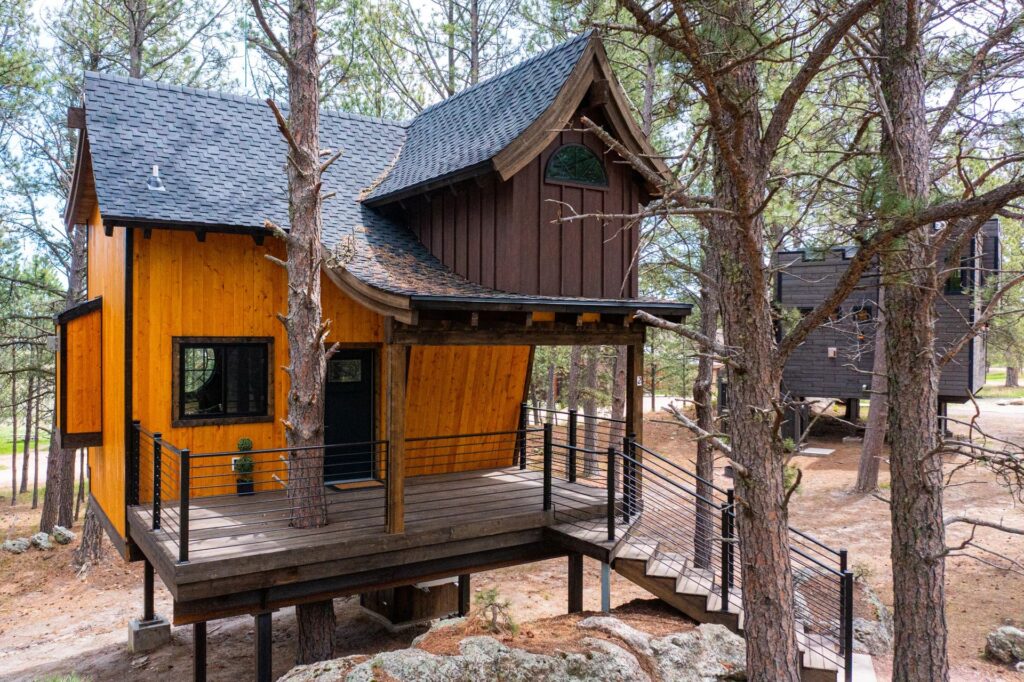
For further context, check out these incredible glamping treehouses.
8. Tipis
Costing between $130 and $1,000, tipis are one of the cheapest and simplest glamping accommodations on this list.

Tipis are weather-resistant, easy to assemble, and have optimal temperature regulation. That said, they aren’t as spacious as other glamping options and might not be as easily accessible to everyone.
To see examples of campgrounds implementing tipis, check out the top 25 tipis from around the world.
9. Motels
LOGE finds closed down or abandoned motels near interesting towns or trails and refurbishes them to cater towards a more outdoor-focused experience, often adding camping options to the property.
Not to be confused with traditional motel updates, new owners are taking the bones of existing lodgings and transforming them into upscale campgrounds. You can even sleep in a hammock in your motel room:
10. Covered wagons
If you’re looking to add novelty to your campground, covered wagons are a playful and often climate-controlled option. They’re glorified tents with a western motif and create great photo ops.
11. Domes.
Unconventional yet environmentally conscious, geodesic domes are more than just aesthetic. Their spherical structure makes them one of the most efficient interior atmospheres for lodging because “air and energy are allowed to circulate without obstruction.” You can even place them in exotic locations with extreme wind turbulence, as the architectural design lessens any winds contributing to heat loss.

Furthermore, they install quickly–1 to 3 days–and cost only $9 to $15 per square foot.
12. Glamping pods
Glamping pods are eco-friendly and stylish. While usually built from recycled material, they’re energy-efficient and retain heat, effectively protecting guests from the elements.
Essentially, they function as a tiny house with a modern design, making them one of the more expensive (upwards of $10,000) and more glamorous options on this list.
Check out some of these great examples.
13. Caboose
Easily one of the most unique forms of accommodation, converted cabooses and boxcars provide a very “Americana” experience for guests looking for something different.
Here’s a list of campgrounds offering trains for lodgings for inspiration.
14. Floating homes
Still connected to water and sewer, a floating home is like having a condo on the water. Unlike a houseboat, floating homes are stationary and generally more expensive.
Also, you’ll need a diver to inspect the home properly from top to bottom.
15. Tiny homes
Smaller than a cabin and moveable by a trailer, tiny homes have become an affordable option for Millenials and Baby Boomers alike.

The tiny home market is projected to be worth more than $5.8 billion in a few years. That same study indicated 63 percent of Millenials are interested in buying a tiny home, and 40 percent of tiny homeowners are Baby Boomers—ensuring that renting a tiny house at your campground will appeal to all clientele.
16. Container homes
Container homes are durable, recyclable, quick to build, and mobile. They also have a resale value of upwards of 100 percent, making them a reasonably affordable and safe investment.
Smaller and more basic homes will cost between $10,000 and $35,000, while larger homes will run between $100,000 and $175,000.
Homesteading has a list of 17 container homes that show just how creative you can get with accommodations.
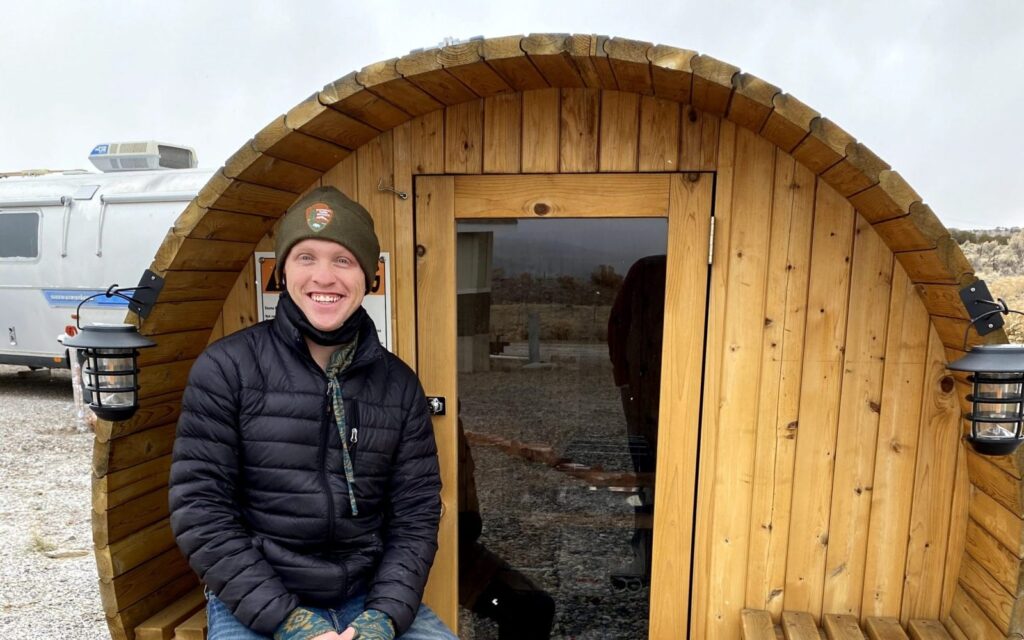
Glamping Campgrounds
Many of our campgrounds have found success bringing in more business to their park by adding a few glamping options. If you’re looking for a few easy and affordable ways to start implementing glamping options, consider adding:
- Luxury canvas tents or yurts.
- Cabins, tiny homes, or glamping pods.
- Converting vintage campers.
Get more glamping reservations.
Taking online reservations is an easy way to help you grow your glamping audience. Request a demo of Good Sam Campground Solutions!